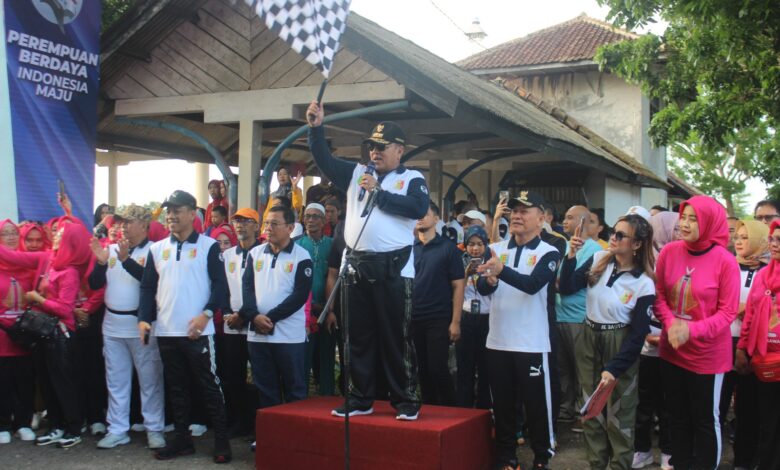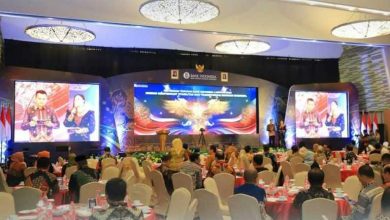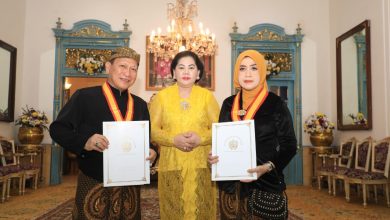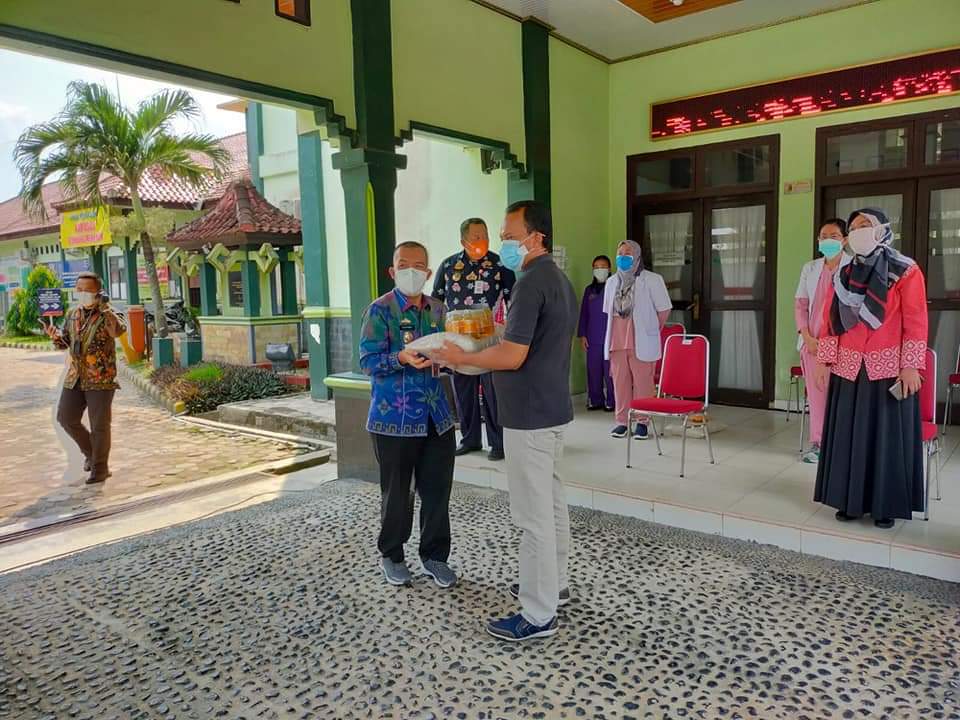Gubernur Lampung Meriahkan Jalan Sehat di Tulang Bawang
Tulang Bawang (IMN) – Gubernur Lampung Ir. Arinal Djunaidi, di dampingi oleh bupati Tulang Bawang bapak Drs. Qudrotul Ikhwan MM, mengikuti kegiatan jalan sehat dalam rangka memperingati Hari Ibu di kecamatan Menggala kabupaten tulang bawang Jumat, (15/12/2023).
Kegiatan ini diikuti oleh seluruh OPD Tulang Bawang, warga Menggala serta siswa siswi SD, SMP dilingkup Kecamatan Menggala.
Dalam kegiatan ini Gubernur Lampung, Arinal Djunaidi, menyampaikan bahwa kegiatan ini sangat baik dan memberikan efek positif bagi masyarakat Tulang Bawang.
Beliau juga berharap kegiatan ini dilaksanakan secara rutin demi menciptakan masyarakat yang sehat, kompak dan memiliki kebersamaan yang tinggi.
“Alhamdulillah saya bahagia bisa bertemu dengan masyarakat Tulang Bawang yang penuh semangat dalam mengikuti jalan sehat ini, doorprize itu hanya bonus
Terpenting badan kita selalu sehat dan bahagia” Jelas bapak Gubernur Arinal Junaidi
“Kegiatan positif ini saya harapkan dapat terus di laksanakan demi menciptakan masyarakat yang bahagia dan sadar serta peduli akan kesehatan. Sehat itu penting bagi kita semua” Bapak Arinal djunaedi menambahkan
“Dalam momentum ini saya juga menyampaikan kepada masyarakat agar terus menjaga keamanan dan kondusifitas. Suhu politik makin meningkat, saya harap masyarakat tetap memiliki edukasi yang baik dalam berpolitik, tidak terprovokasi dan memastikan bahwa situasi terutama di lingkungan kita tetap baik dan terjaga” Lanjut Bapak Arinal djunaedi
Seirama dengan Bapak Gubernur Lampung, Pj. Bupati Tulang Bawang bapak Qudrotul Ikhwan MM juga memberikan respon yg baik dengan adanya kegiatan jalan sehat dalam memperingati hari ibu.
Pj Bupati Tulang Bawang juga menyampaikan bahwa kita harus mampu melakukan hal terbaik sesuai potensi dan bidang kita masing-masing. Jika komitmen berbenah sudah terbentuk dengan baik, maka pasti kita mampu mewujudkan Kabupaten Udang Manis ( Unggul Damai Aman Nyaman Guyup Mandiri Agamis Inovatif dan sejahtera )” jelas bapak Qudrotul Ikhwan
Selain itu juga, bapak gubernur Arinal Djunaidi yg di dampingi oleh bapak PJ bupati Tulang Bawang Qudrotul Ikhwan, berkesempatan mengunjungi destinasi Cakat Raya (Cakat nyenyek), yg merupakan salah satu destinasi wisata yg ada di Tulang Bawang.
Selanjutnya, selesai melakukan kunjungan, Bapak gubernur Lampung Arinal Djunaidi, didampingi oleh bapak PJ bupati Tulang Bawang, beserta masyarakat Tulang Bawang melaksanakan kegiatan sholat Jum’at di Masjid An-Nur Menggala.
Dalam kesempatan ini, Gubernur Lampung, didampingi oleh PJ Bupati Tulang Bawang, Forkopimda Kab. Tuba, PJ. Ketua TP PKK Kab. Tuba, PJ. Sekdakab Tuba, Seluruh Staff Ahli Bupati, Seluruh Asisten, Seluruh Kepala OPD, Seluruh Kabag Setdakab. Tuba, seluruh Kabag Sekretariat DPRD, Camat Menggala, Seluruh ASN Tulang Bawang. (Red)






